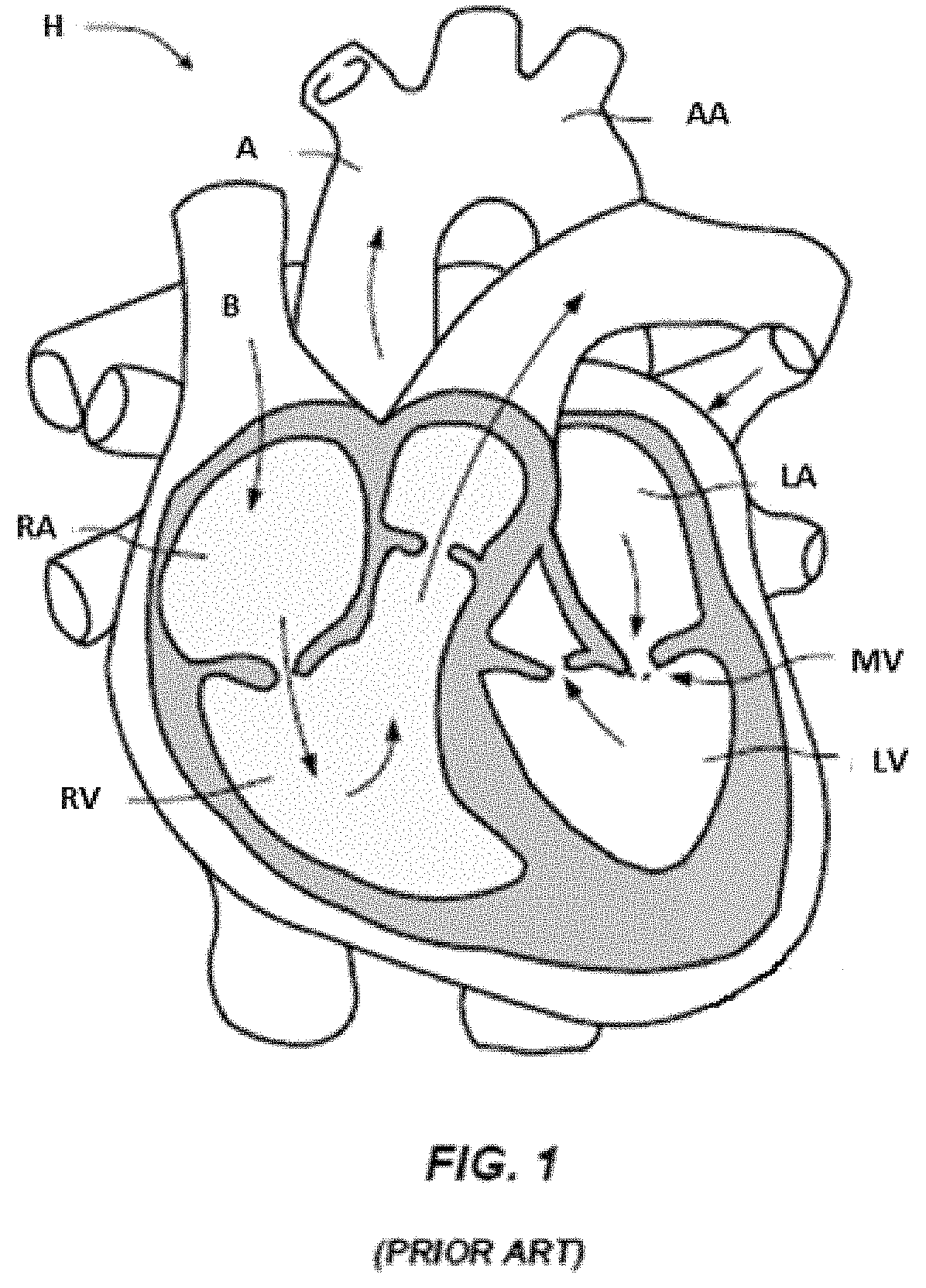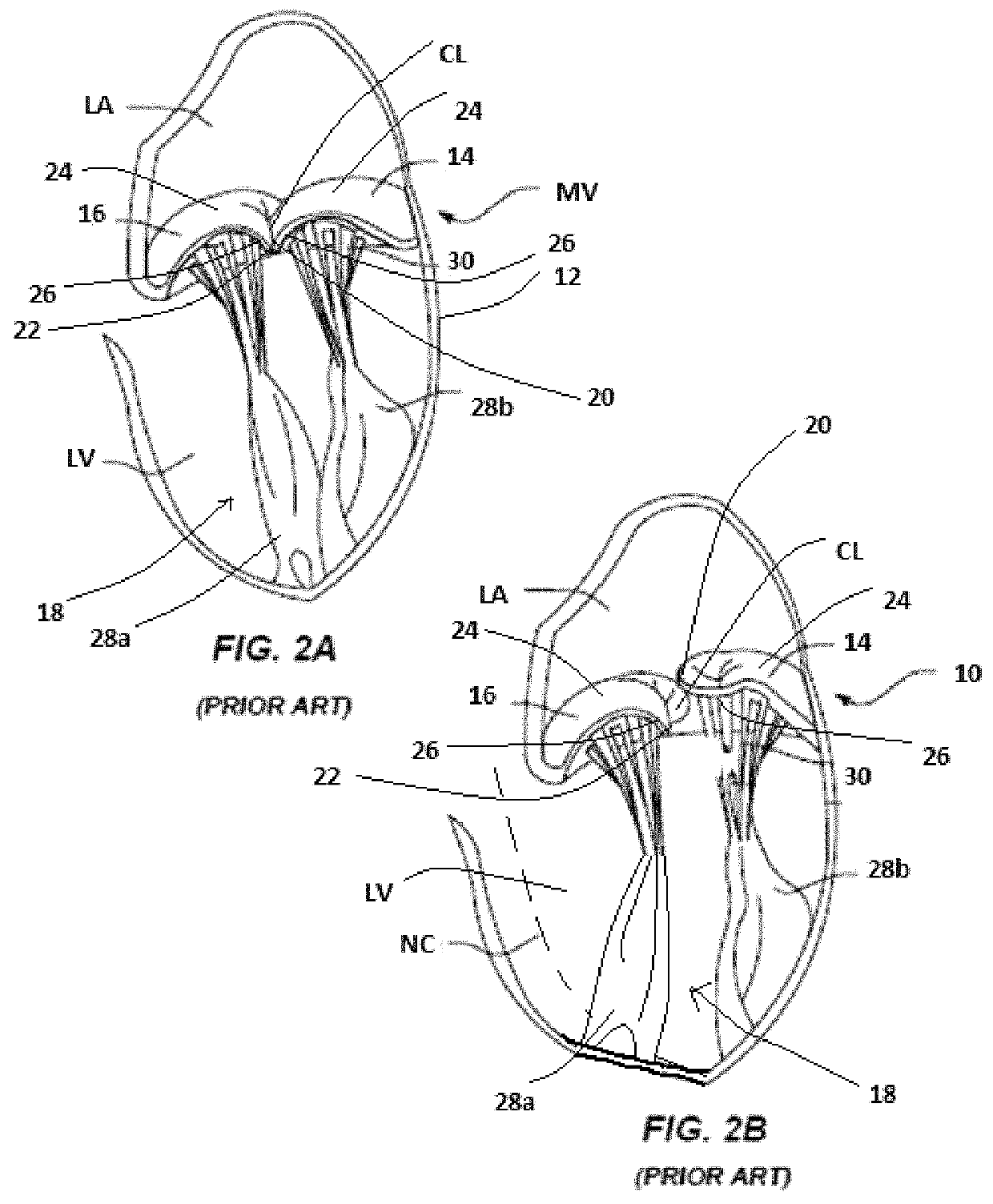Heart valve with chordal capture elements for stabilization
a technology of chordal capture and heart valve, applied in the field of valve repair, can solve the problems of congestive heart failure and pulmonary hypertension, complicating the stabilization of prosthetic mitral valves within the native annulus, and high risk of migrating from the desired position of prosthetic mitral valves
- Summary
- Abstract
- Description
- Claims
- Application Information
AI Technical Summary
Benefits of technology
Problems solved by technology
Method used
Image
Examples
Embodiment Construction
[0023]FIG. 1 is a schematic representation of a human heart H. The human heart includes two atria and two ventricles: a right atrium RA and a left atrium LA, and a right ventricle RV and a left ventricle LV. Blood flows through the heart H in the direction shown by arrows “B”. As illustrated in FIG. 1, the heart H further includes an aorta A and an aortic arch AA. Disposed between the left atrium LA and the left ventricle LV is the mitral valve MV. The mitral valve MV, also known as the bicuspid valve or left atrioventricular valve, is a bi-leaflet valve that opens as a result of increased pressure in the left atrium, relative to the left ventricle, as the left atrium fills with blood.
[0024]A typical mitral valve MV, an example of which is shown in FIG. 2A, includes an annulus 12, a posterior leaflet 14, an anterior leaflet 16, and sub-valvular structure 18. Annulus 12 is a dense ring of fibrous tissue which lies at the juncture between the left atrium and the left ventricle. Poster...
PUM
 Login to View More
Login to View More Abstract
Description
Claims
Application Information
 Login to View More
Login to View More - R&D
- Intellectual Property
- Life Sciences
- Materials
- Tech Scout
- Unparalleled Data Quality
- Higher Quality Content
- 60% Fewer Hallucinations
Browse by: Latest US Patents, China's latest patents, Technical Efficacy Thesaurus, Application Domain, Technology Topic, Popular Technical Reports.
© 2025 PatSnap. All rights reserved.Legal|Privacy policy|Modern Slavery Act Transparency Statement|Sitemap|About US| Contact US: help@patsnap.com



